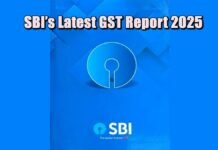
Key Points
- The central government is considering abolishing the 12% GST slab or moving items in this category to the 5% slab, making essentials like clothes, shoes, toothpaste, and utensils cheaper.
- This move is aimed at providing relief to middle-class and lower-income families, following recent changes in income tax slabs.
- Items currently taxed at 12% include readymade garments, shoes, toothpaste, soap, sanitary napkins, utensils, and more.
- The government estimates a revenue impact of ₹40,000–₹50,000 crore but is prepared to absorb this for long-term growth and increased GST collections through higher sales.
- Finance Minister Nirmala Sitharaman has hinted at such changes, but consensus among states is still pending, with opposition from Punjab, Kerala, Madhya Pradesh, and West Bengal.
- Final approval depends on the GST Council, where all states have a vote.
New Delhi: In a move set to bring significant relief to millions of Indian households, the central government is actively considering a major reform in the Goods and Services Tax (GST) structure. According to reliable sources, the government may soon abolish the 12% GST slab entirely or shift all items currently taxed at 12% to the lower 5% slab. This would directly benefit middle-class and lower-income families by making a wide range of daily essentials more affordable.
What Could Get Cheaper?
If implemented, the following items currently taxed at 12% could soon attract just 5% GST, making them noticeably cheaper:
- Personal care: Toothpaste, hair oil, soap, sanitary napkins, tooth powder
- Clothing and footwear: Readymade garments, shoes (₹500–₹1,000 range)
- Household goods: Utensils (aluminium/steel), pressure cookers, electric irons, water heaters, vacuum cleaners, washing machines
- Education supplies: Exercise books, geometry boxes, drawing/coloring books, maps, globes
- Healthcare: Vaccines, diagnostic kits (HIV, Hepatitis, TB), ayurvedic and unani medicines
- Transport and mobility: Public transport vehicles, bicycles, vehicles for disabled persons
- Others: Sewing machines, umbrellas, water filters/purifiers, glazed tiles, ready-mix concrete, agricultural equipment, packed foods, pre-fabricated buildings
Why This Change?
The government’s goal is to boost consumption by reducing the cost of essential goods, thus providing direct relief to the middle class and economically weaker sections. Officials believe that lower prices will spur higher sales, which could broaden the tax base and, over time, offset the initial revenue loss.
What’s the Cost?
- Estimated short-term revenue loss: ₹40,000–₹50,000 crore
- Government stance: Ready to absorb the initial impact, expecting long-term gains through increased GST collections as sales rise.
Next Steps: GST Council Approval Needed
While the Centre is keen on this reform, the final decision rests with the GST Council, where every state has a vote. As of now, some states including Punjab, Kerala, Madhya Pradesh, and West Bengal have expressed reservations, citing concerns over revenue loss.
Finance Minister Nirmala Sitharaman recently indicated in an interview that the government is seriously considering GST relief for essential commodities, reinforcing hopes that a rate cut is imminent.
What Does This Mean for You?
If the proposal is approved, consumers can expect lower prices on a wide range of daily-use goods, from clothes and shoes to household items and personal care products. This would be the latest in a series of steps by the government to ease the financial burden on ordinary citizens, following recent changes to income tax slabs.
The proposed GST reform could be a game-changer for India’s middle class and lower-income groups, making everyday essentials more affordable. However, the final outcome will depend on consensus in the GST Council. If passed, the move is likely to stimulate consumption, boost economic growth, and provide much-needed relief to millions of families across the country. Stay tuned for updates as the GST Council meets to decide the fate of this landmark proposal.
















































